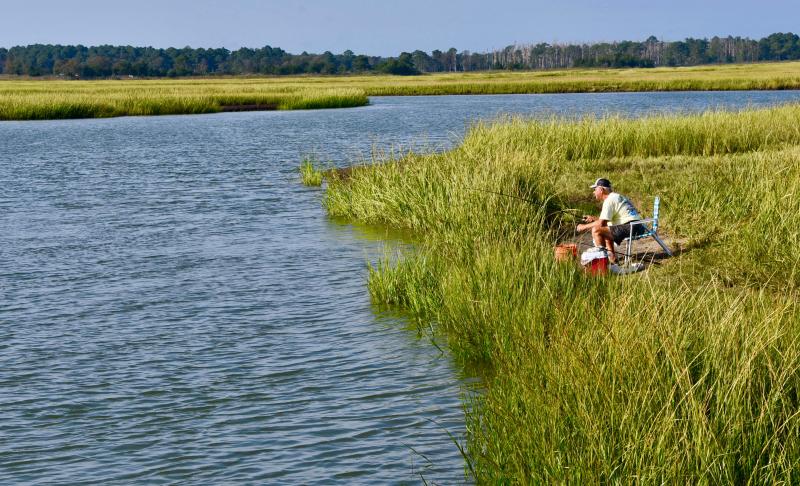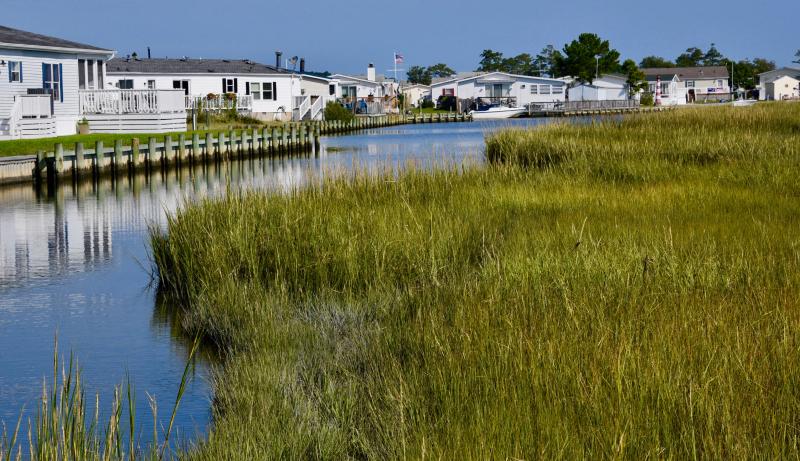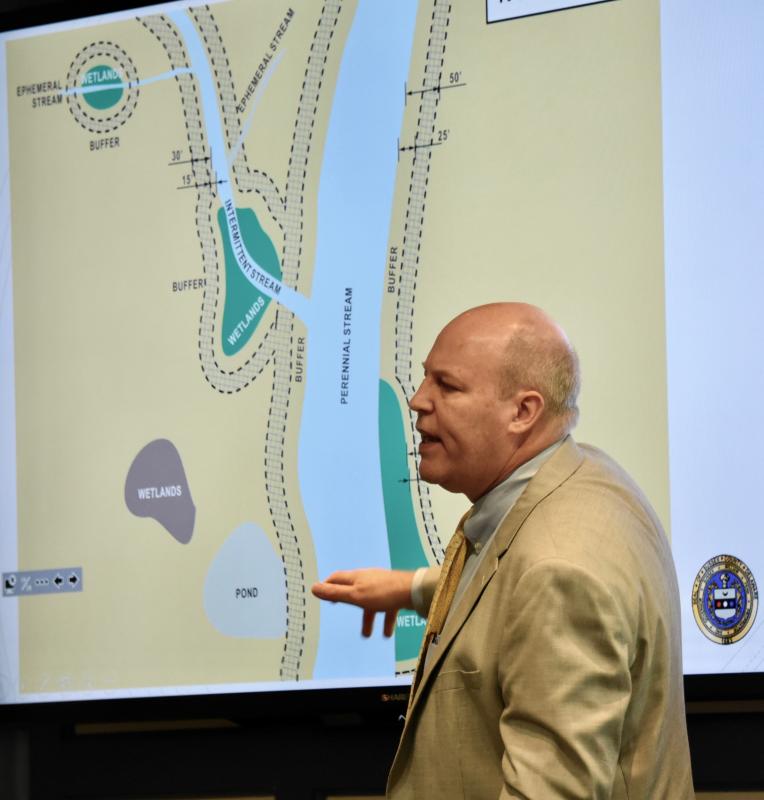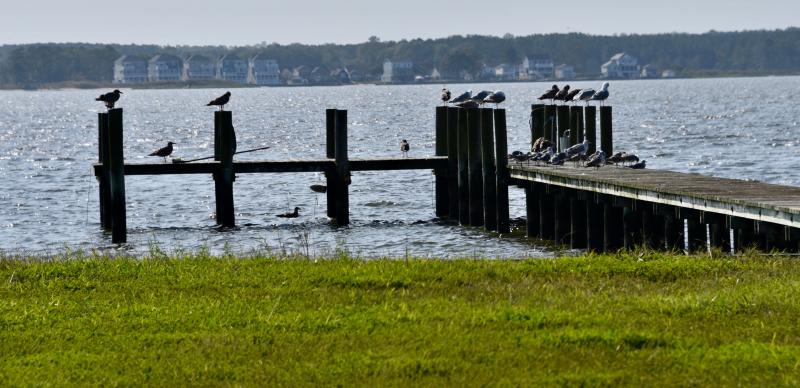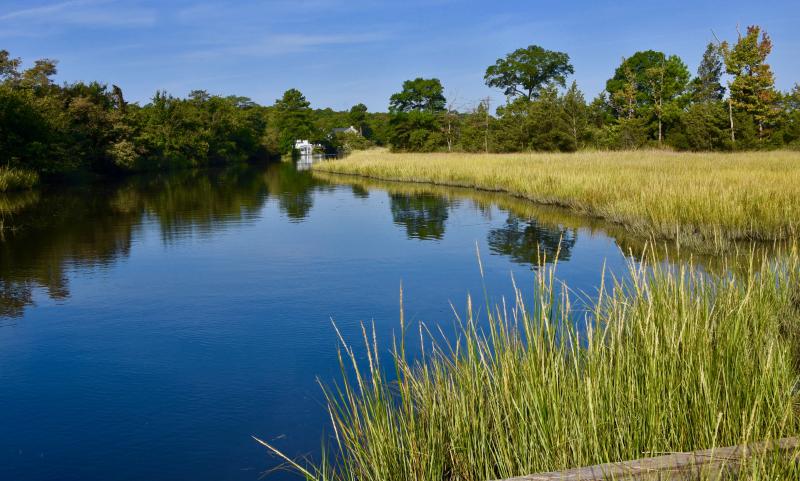If approved by Sussex County Council, buffers for tidal waters and wetlands would double in size to 100 feet. In addition, new regulations would provide 30-foot buffers from nontidal wetlands and intermittent streams.
But first, county legal staff must develop a new ordinance to be introduced by council and face public hearings before the planning and zoning commission and council. At its Sept. 10 meeting, council gave the green light to start the process.
Based on recommendations from a council-appointed wetlands and buffers working group, the ordinance would apply to new residential developments for major subdivisions of more than five lots, cluster subdivisions, residential planned communities and residential conditional uses.
It would not include commercial development, which is an addition some members of the group suggested council should consider.
“This is a landmark moment for the county,” said County Administrator Todd Lawson.
“This is about resource protection and balancing property rights. It's not one against the other,” said consultant Jim Eisenhardt, who presented the recommendations to council.
The proposed ordinance would apply to new residential developments for major subdivisions of more than five lots, cluster subdivisions, residential planned communities and residential conditional uses.
“A lot of this is clarification with some adjustments in the widths of buffers based on today's science versus when the ordinance was written,” Eisenhardt said. “There is no additional administrative burden to the applicant or county.”
Two-zone buffers
The group agreed to support a two-zone buffer management approach. Zone A will encompass the first 50 feet adjacent to a resource and would have the greatest level of protection. Zone B, 50 feet in the outer zone, would be more flexible, allowing more permitted uses.
Eisenhardt said what would be allowed in Zone A would be much more restrictive than what would be permitted in Zone B.
Eisenhardt said the working group has developed a list of permitted and prohibited uses in each of the zones.
Among the prohibited uses suggested by the group would be amenities such as pools and clubhouses in buffer areas, which are currently allowed by county code.
“In current code there is no table with this specificity what is and what is not allowed,” Lawson said.
Eisenhardt said flexility should be built into the ordinance because every site is unique. He said the group discussed, but did not act on, possible waivers and incentives that would allow for flexibility and still protect the environment.
Incentives could include increased density for adding more buffer area or restoring wetlands or shorelines, Eisenhardt said. “This is a whole new discussion the group would like to explore,” he said.
The group agreed a waiver program would be based on hardship and require approval by the planning and zoning commission or by staff as part of the site-plan review process. In addition, the working group suggested using offsets and mitigation to comply with requirements in the ordinance.
The group suggested in areas where buffer widths could be reduced, developers could offer offsite improvements to resources, additional stormwater management features, fees to the county for watershed improvements or trading land with adjacent property owners for additional buffers in the same watershed.
When asked by council what could be planted in buffers, Eisenhardt said the group supported forested and vegetated buffers but also realized that in some cases a combination of grasses, plants and trees is appropriate.
“In many cases there are scenic vistas in tidal areas, and you need to protect that,” Eisenhardt said.
He said the group's recommendations are that buffers be planted and have a maintenance plan. “The details can be worked out in the ordinance,” he said.
Group members comment on ordinance
Eisenhardt said issues arose during meetings that require either further discussion or assistance from county government or other agencies. He said the group agreed the state needs to update the tidal wetlands maps. The group agreed the ordinance should address buffers in areas prone to sea-level rise.
Group member Ed Launay, an environmental consultant, said council should seriously consider expanding the ordinance to include commercial areas. “It shouldn't be different between residential and commercial. It should be across the board to include all development activities,” he said.
Group member Robert Tunnell said the two-zone approach mirrors an ordinance in the Town of Ocean View. “There is precedent on a smaller scale for an ordinance like this,” he said.
Delaware Center for the Inland Bays Executive Director Chris Bason said the proposal is a lot closer to being aligned with current science relating to buffers. He said it's important to provide buffers along intermittent streams and nontidal wetlands because they often border tidal wetlands.
Group member Rich Borrasso, representing Sussex Alliance for Responsible Growth, said the ordinance would be tied directly to the new comprehensive land-use plan. “It would maintain the rural character of the county,” he said.
R.C. Willin, a Seaford-area farmer, urged council to ensure that management and oversight are key components of the ordinance.
Lawson said work on writing the ordinance would take place this fall.
WHY BUFFERS ARE IMPORTANT
• Protect natural resources
• Preserve water quality
• Provide flood management and drainage
• Provide wildlife habitat











